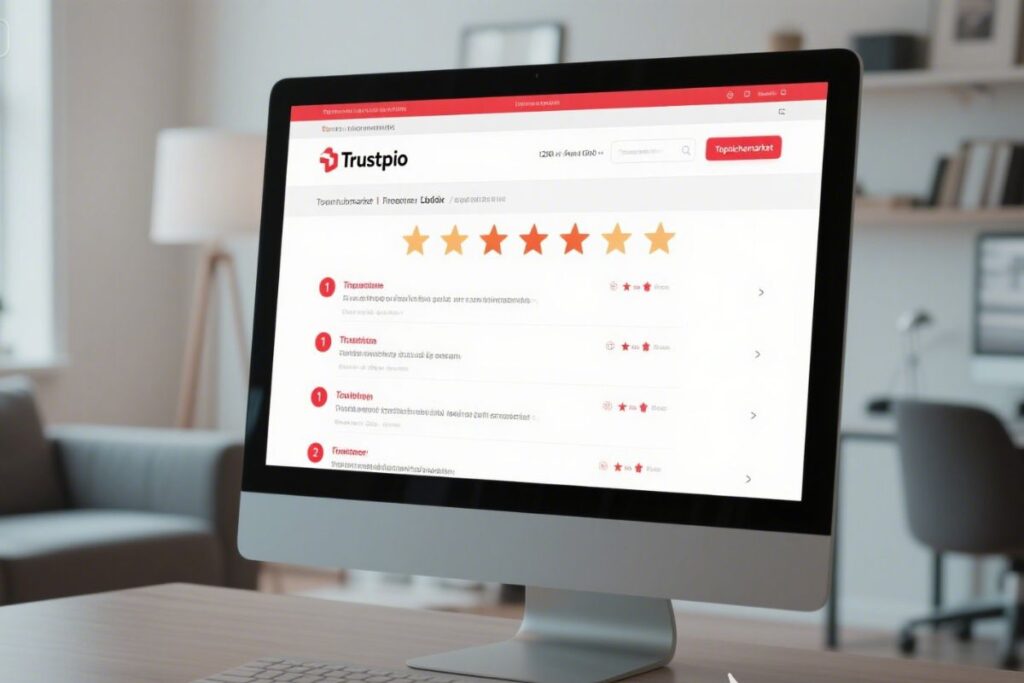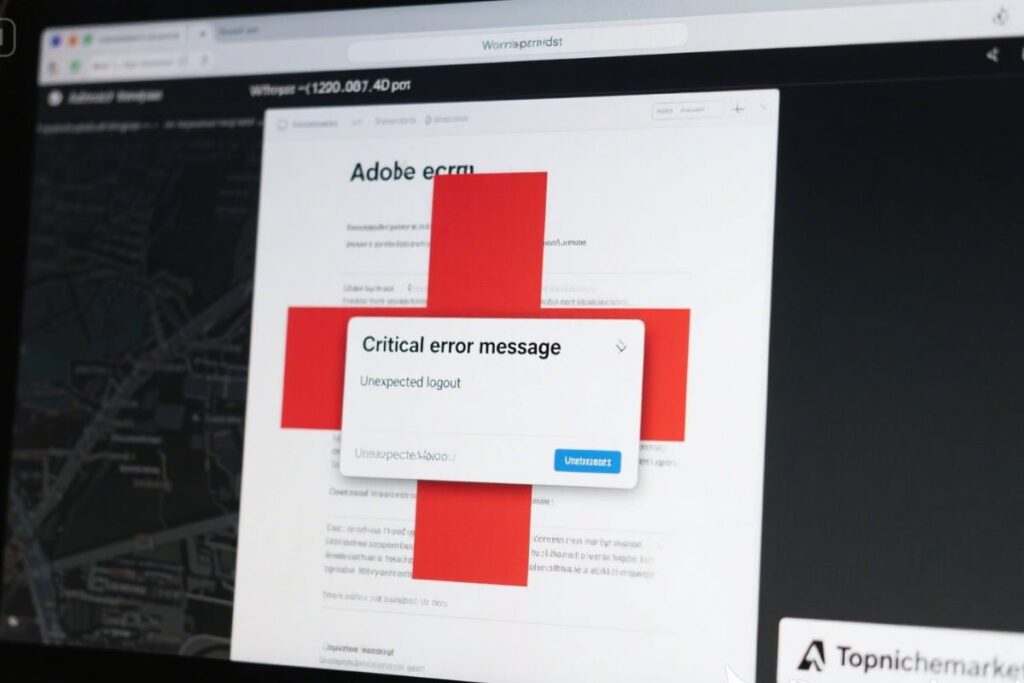Table of Contents
ToggleAdobe Acrobat Reviews 2024: Unpacking Customer Feedback & Common Complaints

Adobe Acrobat Reviews 2024 Unpacking Customer Feedback & Common Complaints
Welcome, fellow digital explorers! If you’re reading this, you’re likely interested in Adobe software, perhaps specifically looking for insights into Adobe Acrobat reviews or considering downloading Acrobat Reader software. Adobe stands as a major force in the creative and document software world. For years, their applications have defined industry standards, empowering professionals and hobbyists alike. While you might first think of tools like Photoshop or Premiere Pro, their document solutions, including the powerful Adobe Acrobat and the widely used adobe acrobat viewer (often known simply as Adobe Reader), are globally essential for handling PDFs.
However, recent feedback from actual users paints a strikingly different picture. This article goes beyond technical features to explore the real-world experiences of over 5,800 customers who shared their thoughts on Trustpilot. What we discovered from this extensive feedback is both significant and, frankly, concerning for potential users. With an overall Trustpilot score sitting dramatically low at just 1.2 stars, and a staggering 90% of reviews giving the lowest possible 1-star rating, it’s clear that a substantial portion of Adobe’s user base is encountering serious challenges.
Our goal here is to highlight the recurring themes and significant issues directly pointed out by users in these thousands of reviews. We will delve into common frustrations, from puzzling billing practices and notoriously difficult customer support to unexpected software glitches and tricky account access problems. If you are weighing options for PDF software, creative suites, or interacting with a large digital company like adobe adobe acrobat, understanding these widely reported user experiences is absolutely crucial in 2024.
Diving into Recent Adobe Customer Feedback: A Look Behind the Curtain
Let’s peek behind the curtain and see what thousands of real users are saying about their Adobe journey, using only the insights from their Trustpilot reviews. While Adobe’s software, including mainstays like Adobe Acrobat and the ubiquitous Acrobat Reader software, is often seen as the benchmark in many industries, the narrative from recent customer feedback presents a complex and frequently challenging view of the user experience surrounding these powerful tools.
The sheer volume of feedback—over 5,800 ratings on a prominent platform like Trustpilot—provides substantial evidence regarding customer sentiment. The overall score of 1.2 stars and the overwhelming majority (90%) of 1-star reviews are more than just numbers; they represent thousands of individual stories of frustration and dissatisfaction. This isn’t a small group of unhappy customers; it suggests systemic issues affecting a large user base.
So, what exactly are these users experiencing? The purpose of this section, and the entire article, is to synthesize and present the core complaints and difficulties that repeatedly appear throughout these reviews. We focus strictly on the voices of the customers as captured in this feedback, allowing their experiences to guide our exploration.
We will unpack the key areas where users report encountering friction and problems. This includes the often-dreaded world of subscription management and billing, the frequently criticized realm of customer support interactions, issues with the reliability and performance of the software itself (relevant for users of Adobe Acrobat, Photoshop, and others), and frustrating challenges related to account access and security. Understanding these common pain points, as reported directly by users, is essential for anyone considering or navigating the Adobe ecosystem, whether you need a sophisticated adobe acrobat viewer or a full Creative Cloud subscription.
Key Themes Emerging from Adobe Customer Reviews: The User’s Perspective

Key Themes Emerging from Adobe Customer Reviews The User’s Perspective
Stepping directly into the shoes of the thousands of users who left feedback on Trustpilot, we can identify the most frequently mentioned points of frustration and concern. These are not isolated incidents but recurring themes woven through review after review, painting a vivid picture of the challenges many customers face. Let’s explore these key areas of discontent.
Subscription Billing & Cancellation Issues: The Unexpected Costs
One of the most prominent and passionately expressed sources of frustration among Adobe reviewers centers around the complexities and perceived unfairness of their subscription billing practices, particularly concerning cancellations. Imagine signing up for a service, perhaps needing Adobe Acrobat for a specific project, assuming you have flexibility, only to find yourself entangled in unexpected fees when you try to leave.
Numerous reviews describe encountering hidden cancellation fees. Users recount being shocked by significant early termination charges, sometimes amounting to substantial sums (one example cited a fee over £64). These charges often come as a surprise, leading to feelings of being trapped in a contract or penalized for wanting to end their subscription before a full year is up, even if they no longer need the service. The structure of the annual plan, billed monthly, appears to be a particular point of confusion and frustration, as users expect the flexibility of monthly billing to extend to cancellation terms.
The process of cancelling a subscription itself is frequently described as difficult and intentionally obtuse. Users report navigating convoluted online processes, struggling to find a clear cancellation path, or discovering they have missed a narrow “window” for cancellation without penalty. This difficulty in simply ending a service contributes significantly to user frustration and the feeling of being locked into unwanted expenses.
Compounding these issues are reports of users being charged after they believed they had successfully cancelled their service, or receiving unexpected charges for services they did not knowingly sign up for (like charges related to Adobe Stock appearing without clear consent). These instances erode trust and create significant financial and emotional stress for customers who then have to fight to rectify the situation.
In some reviews, users shared hard-won advice based on their negative experiences. One recurring suggestion found in the feedback is to consider paying for subscriptions via PayPal. The rationale offered by these users is that PayPal’s dispute resolution process can provide a potential avenue for recourse or easier refund recovery when faced with unauthorized or disputed charges that are difficult to resolve directly with Adobe. This user-generated workaround highlights the depth of the problems users face and their search for alternative means of protection. These billing and cancellation woes appear to be a major driver behind the overwhelmingly negative feedback, impacting users of all Adobe products, including those who initially signed up for something like Adobe Acrobat for PDF editing or a creative suite.
Customer Support Experiences: A frustrating Maze
If navigating billing issues feels like a maze, attempting to resolve them (or any other problem) through Adobe’s customer support is frequently described in the Trustpilot reviews as entering a “support black hole” or a “Kafkaesque nightmare.” The feedback on customer support is overwhelmingly negative and represents another critical area of user dissatisfaction.
Reviewers use strong language to describe their interactions, labelling the support as “ridiculously bad,” “non-existent,” “terrible,” and “the worst they have ever experienced.” These are not polite disagreements; they are expressions of profound frustration and helplessness.
Examples of poor support interactions abound in the feedback. Users report long wait times, only to be connected with agents who seem unable to understand or resolve their specific issues. There are frequent mentions of agents relying rigidly on scripts, failing to deviate even when the user’s problem does not fit the standard troubleshooting flow. A particularly frustrating complaint involves agents abruptly dropping out of chat sessions or phone calls, requiring the user to start the entire process over with a new representative who is unaware of the previous conversation. Being transferred multiple times between departments, with each agent requiring the user to re-explain their problem from the beginning, is another common grievance that wastes users’ time and patience.
Beyond the quality of the interaction, users also report significant difficulty in simply finding how to contact support in the first place. Hidden contact information or complex online portals designed to push users towards self-help guides rather than human interaction contribute to the feeling that the company makes it intentionally hard to get help. The lack of timely, effective support leaves users feeling abandoned, especially when dealing with urgent issues like inability to access software they are paying for (be it Adobe Acrobat, Photoshop, or others) or resolving incorrect charges.
The sheer volume and consistency of negative feedback regarding customer support indicate a significant systemic issue that leaves a vast number of users feeling unsupported and unheard, turning what should be a path to resolution into an additional source of major frustration.
Software Reliability and Usability Concerns: When Tools Fail You

Software Reliability and Usability Concerns When Tools Fail You
While much of the feedback focuses on the business and support aspects, a significant portion of reviews also touches upon issues directly related to the performance and usability of Adobe’s applications, impacting everything from creative work to managing documents with Adobe Acrobat. For users who rely on these tools daily, software stability and ease of use are paramount, and recurring complaints in this area are particularly damaging to the user experience.
Users report encountering buggy applications and general instability. This can manifest in various ways: apps randomly logging them out, requiring constant re-authentication which interrupts workflow; linking issues between files or applications; or general unresponsiveness and crashing. Imagine working on a critical document in Adobe Acrobat, perfecting a complex PDF, only for the application to suddenly close or demand you log in again.
A particularly critical and anxiety-inducing issue highlighted by users is the report of files disappearing mid-work session. This is not just a minor glitch; losing hours or even days of work without warning is a catastrophic event for any user, whether they are creating art in Illustrator or finalizing an important contract using adobe adobe acrobat for professional purposes. This kind of fundamental instability erodes trust in the software as a reliable tool for essential tasks.
Feedback also includes complaints about a perceived decline in usability or workflow efficiency in newer versions of the software. While specific examples might vary across different Adobe products, one review mentioned frustrations with workflow changes in Photoshop Elements 2025. These complaints suggest that updates, instead of improving the user experience, can sometimes introduce hurdles or make familiar processes more cumbersome, forcing users to adapt to less intuitive interfaces or methods. For someone regularly using Adobe Acrobat for document workflows, unexpected changes to familiar tools or menus can be disruptive.
Furthermore, the nature of the SAAS (Software as a Service) model itself, which requires users to constantly sign in and maintain an internet connection for full functionality, is a point of frustration for some. Reviews mention that this dependency impacts offline use and introduces points of failure related to internet connectivity or authentication servers, making the software less reliable in situations where a stable online connection is not guaranteed. This can be particularly problematic for professional users who need their tools, like adobe acrobat or acrobat reader software (for viewing and basic functions), to be available and fully functional regardless of network status. Specific complaints related to Adobe Acrobat usability included observations about intrusive ads or prompts pushing paid features even for users who already pay for a subscription, or encountering specific bugs within the adobe acrobat viewer interface or editing functions.
These software-related issues, when combined with the problems in billing and support, contribute to an overall picture of a service that, despite its powerful capabilities, can be unreliable and frustrating to use on a day-to-day basis according to a significant number of reviewers.
Account Access and Data Security Issues: Losing Control
Another area causing considerable anxiety and frustration among Adobe users, as reported in the Trustpilot reviews, relates to problems with account access and underlying concerns about data security and privacy. For a company that holds creative work, documents handled by Adobe Acrobat, and personal billing information, trust in account management and security is paramount.
A recurring complaint involves users being locked out of their accounts. This can happen for various reasons mentioned in the reviews, including issues with outdated security settings that users find difficult or impossible to update, or problems with two-factor authentication processes that fail or lock users out without a clear recovery path. Imagine needing urgent access to files stored in the cloud or needing to use your licensed Adobe Acrobat software, only to find yourself unable to log in, with no immediate or easy way to regain access. This situation is not just inconvenient; it can halt work and create significant stress. The inability to recover accounts through standard support channels, forcing users into lengthy and often fruitless interactions, exacerbates this frustration.
Beyond simple access, user concerns about privacy and data security also surface in the reviews. Some negative experiences with customer support have fueled these fears, such as reports of support agents requesting excessive or overly intrusive access to users’ computers during troubleshooting sessions. This raises red flags for users regarding the handling of their personal data and intellectual property.
Coupled with the reports of files disappearing mid-work, there is an underlying fear expressed in some reviews that users’ work is not entirely safe or private within the Adobe ecosystem. The combination of being locked out of accounts and the potential for unexplained data loss or invasive support practices creates a climate of unease regarding the safety and security of their digital assets and personal information stored or accessed via Adobe’s services, including documents managed with adobe adobe acrobat. This lack of confidence in account control and data safety adds another layer to the negative customer experience reported by this large group of reviewers.
Navigating the Customer Journey: Points of Friction Highlighted by Users

Navigating the Customer Journey Points of Friction Highlighted by Users
Moving beyond specific pain points like billing or support, the Trustpilot reviews paint a picture of the overall customer journey with Adobe as being fraught with friction and difficulty. It’s not just about individual problems; it’s the entire process of being an Adobe customer that many users find challenging, frustrating, and even nightmarish.
Think about the typical customer journey: You decide you need software, perhaps Adobe Acrobat for professional PDF work or a creative suite for design. You sign up, maybe start a free trial. You begin using the software. You might encounter a bug or have a billing question. You try to contact support. Later, you might need to adjust your subscription or potentially cancel. At each stage, according to these thousands of reviews, users are encountering significant obstacles.
The reviews suggest that the initial sign-up might be smooth, but the difficulties begin when users need anything beyond the basic functionality or when they encounter a problem. Managing the subscription—understanding the terms, finding billing details, attempting to change plans, or critically, trying to cancel—is repeatedly highlighted as an area designed to create difficulty. The “hunt” for the cancellation button, the unexpected fees, the lack of clarity—these are not accidental minor inconveniences; they are systemic hurdles that users feel are intentionally placed to retain customers.
When issues arise, whether they are technical glitches with Adobe Acrobat or problems with billing, the official channels for resolution—customer support—are frequently described as ineffective or actively detrimental to resolving the problem. The stories of long waits, unhelpful agents, and dropped calls illustrate a support structure that, according to users, seems more designed to deflect than to help. This means that when a user needs assistance, the process itself becomes a source of further frustration, prolonging the original problem and adding to the user’s stress.
The reviews reflect a sentiment that the corporate structure and policies actively work against the user. This is not just about poor service; it is a feeling that the company is difficult to deal with on principle. The description of the experience as a “nightmare of Kafkaesque proportions” is a powerful one, suggesting a labyrinthine bureaucracy where users feel trapped, unable to find a clear path to resolution, and powerless against complex systems and policies.
This overall friction in the customer journey, from the initial interaction beyond basic usage through problem resolution and subscription management, is a significant takeaway from the thousands of Trustpilot reviews. It highlights that for a large segment of users, the challenge lies not just in using the powerful software tools like adobe adobe acrobat, but in simply being a customer of the company.
Perceived Value and Monopoly Status: Paying a Premium for Problems?
Another powerful theme woven through the Trustpilot reviews is the user’s perception of value relative to cost, often linked to Adobe’s dominant position in the market. Users frequently express that the high price of Adobe’s software and subscriptions feels exorbitant, especially when coupled with the multitude of problems they report experiencing.
Reviewers commonly state that the software is “too expensive” or “not worth the price.” This sentiment is not usually a simple complaint about cost in isolation; it’s a judgment made in the context of the issues they face. Users seem to feel that if they are paying a premium price for industry-standard tools like Adobe Acrobat, they should receive a premium level of service, support, and a seamless, reliable user experience. When they encounter hidden fees, struggle with unresponsive support, or battle buggy software and account access issues, the value proposition feels severely diminished. They are paying top dollar but receiving what they perceive as frustrating, low-quality service around the core product.
This perception of poor value for money is often tied directly to the idea that Adobe holds a near “monopoly” or is the unquestioned “industry standard.” Users feel they have to use Adobe software—whether it is a creative suite for their job or Adobe Acrobat for collaborating on PDFs—because it is what everyone else uses, or because clients and colleagues expect files in Adobe formats. This perceived lack of viable alternatives, according to the reviewers’ perspective, means Adobe faces less competitive pressure to improve its customer service, simplify its billing, or iron out software bugs. Why invest heavily in customer experience when users feel they have no other choice?
The user sentiment suggests that Adobe’s market dominance, while a testament to the power and capability of their core products (like adobe acrobat viewer for handling PDFs), has potentially led to complacency in other crucial areas of the business. Customers feel that they are beholden to Adobe due to the industry lock-in, and that this position allows the company to prioritize revenue streams (like difficult cancellation terms) over customer satisfaction. This dynamic—high cost, coupled with significant reported problems and a perceived lack of alternative options—is a major source of resentment and contributes significantly to the negative tone of the reviews. It is a feeling of being forced to pay a high price for a frustrating experience because the tools, like adobe acrobat, are essential for their work.
Balancing the Feedback: Reported Positives (Limited by Source Material)

Balancing the Feedback Reported Positives (Limited by Source Material)
It is crucial, for the sake of presenting a complete picture based on the provided Trustpilot reviews, to acknowledge any positive sentiments expressed by users, even within a dataset that is overwhelmingly negative. While the vast majority of the 5,800+ reviews were 1-star complaints highlighting significant issues, there were indeed a very small number of positive observations scattered amongst the feedback.
The most frequently mentioned positive aspect, though often noted within a larger complaint about service or billing, is the acknowledgment that Adobe’s applications are considered “industry standard.” This underscores why so many users find themselves using Adobe products, including essential tools like Adobe Acrobat, despite the reported frustrations. Professionals and organizations rely on these tools for compatibility, collaboration, and access to advanced features that competitors may not offer to the same degree. This positive point is not necessarily about the experience of using the software, but rather its necessary role in many workflows.
A related, though less frequent, positive comment was the simple statement that the “products are good.” This suggests that, when the software works as intended and the user is not battling billing or support issues, the underlying functionality and power of applications like adobe adobe acrobat are recognized and appreciated. However, this positive is often immediately followed by a “but…” detailing the frustrations with the subscription model, customer service, or reliability issues, indicating that the quality of the product itself is often overshadowed by the negative surrounding experience.
The scarcest positive feedback was found in a single review stating that they are not changing from Adobe, implying satisfaction or at least a strong preference despite potential issues. This perspective represents a tiny fraction of the overall feedback provided in the source material.
It is essential to frame this section accurately: based strictly on the analysis of the provided reviews, positive feedback is present but is dramatically outweighed and often qualified by the sheer volume and intensity of the negative experiences reported regarding billing, support, account issues, and software reliability. While the capabilities of tools like Adobe Acrobat and acrobat reader software may be acknowledged as industry benchmarks, the overall customer sentiment captured in these reviews is heavily skewed towards dissatisfaction with the company’s practices and service surrounding those products.
The Cons: A Summary of User Frustrations with Adobe
Based on the comprehensive analysis of the themes emerging from the over 5,800 Trustpilot reviews, we can compile a clear list of the main disadvantages and frustrations reported by users when interacting with Adobe and its products, including popular offerings like Adobe Acrobat. This summary highlights the recurring problems that contribute to the overwhelmingly negative customer sentiment captured in the feedback:
- Poor/Non-existent Customer Support: Users report extreme difficulty contacting support, long waits, unhelpful or scripted responses, agents dropping conversations, and an overall feeling of being unable to get issues resolved efficiently or effectively. The support experience itself is frequently described as a significant source of stress.
- Hidden Fees and Deceptive Billing Practices: A major point of contention involves unexpected charges, particularly hidden cancellation fees and early termination penalties, which users feel were not made clear at the time of subscription. Reports of being charged after cancellation or for unsolicited services also fall under this frustrating umbrella.
- Difficulty Cancelling Subscriptions: Users widely complain about the convoluted and challenging process of cancelling their subscriptions online or via support, feeling that the company intentionally makes it difficult to end a service or avoid penalties, reinforcing the feeling of being trapped.
- Buggy and Unstable Software: Despite being industry standards, the applications themselves, including potentially Adobe Acrobat, are reported by some users to be unreliable. Issues include random logouts, crashes, linking problems, and general instability that disrupts workflows.
- Data Loss and Security Concerns: Reports of files disappearing mid-work raise serious concerns about data integrity. Additionally, issues with account access and invasive support requests contribute to user anxiety regarding the security and privacy of their data and digital assets stored within the Adobe ecosystem.
- Frustrating User Experience in Newer Versions: Some users report that updates or newer versions of the software introduce workflow changes or interface elements that make the applications less intuitive or efficient to use compared to previous iterations. This applies across the suite, potentially affecting how users interact with tools like adobe acrobat viewer.
- High Cost Relative to Reported Issues: Many users feel that the premium price they pay for Adobe subscriptions is not justified by the quality of the overall customer experience, particularly when dealing with the frequent problems in support, billing, and software stability.
- Account Access Problems: Users report significant difficulty logging in, recovering accounts locked due to outdated security settings, or navigating authentication issues, preventing them from accessing the software they need.
- Perceived Lack of Care Due to Monopoly Status: Users express a sentiment that Adobe’s dominant position in the market, where its tools like adobe acrobat are often seen as essential industry standards, removes the incentive for the company to prioritize customer satisfaction or address known, recurring issues with urgency.
Conclusion: What the Trustpilot Reviews Suggest About Adobe

Conclusion What the Trustpilot Reviews Suggest About Adobe
Stepping back and summarizing the findings from our deep dive into over 5,800 Trustpilot reviews, a clear and consistent picture emerges, driven by the voices of thousands of Adobe customers. While Adobe’s software, including powerful tools like Adobe Acrobat and the essential adobe acrobat viewer, is widely acknowledged as setting the industry standard in many creative and document management fields, the reviews suggest that the experience of being an Adobe customer is, for a significant number of users, far from standard—and overwhelmingly negative.
The data presented from these recent Trustpilot ratings, particularly the staggering 1.2-star average and 90% 1-star reviews, indicates that a large segment of Adobe’s user base is reporting serious, recurring issues across several critical areas of their customer journey.
The most prominent and passionately expressed concerns revolve around billing and subscription management. Users frequently report encountering hidden cancellation fees, experiencing significant difficulty in ending their subscriptions, and receiving unexpected or incorrect charges. These practices lead to feelings of being misled, trapped, and unfairly penalized financially.
Equally significant is the feedback on customer support. The reviews paint a picture of a support system that is often inaccessible, ineffective, and frustrating, characterized by long waits, unhelpful interactions, and unresolved issues. This leaves users feeling unsupported and abandoned when they encounter problems.
Furthermore, while the core functionality of applications like adobe acrobat might be recognized as powerful, users report concerning issues with software reliability and usability. Complaints about buggy performance, random logouts, frustrating interface changes, and even alarming instances of files disappearing mid-work session undermine confidence in the tools themselves as stable platforms for essential tasks.
Account access difficulties and underlying anxieties about data security also contribute to the negative sentiment, adding another layer of friction and distrust for users attempting to manage their relationship with the company and secure their digital assets handled by tools like adobe adobe acrobat.
So, what do these Trustpilot reviews suggest for someone considering Adobe products like adobe acrobat, the dedicated adobe acrobat viewer, or the widely used acrobat reader software? Based strictly on the feedback presented in these reviews, potential customers should proceed with caution and be acutely aware of the recurring issues reported by a significant portion of the existing user base. While the software capabilities may be necessary or desirable, the surrounding customer experience—from managing the subscription to seeking support—appears challenging according to these reviews.
The reviews suggest that potential users should thoroughly research subscription terms, particularly cancellation policies, before committing. They should be prepared for potentially difficult interactions if they need customer support and be mindful of saving and backing up their work diligently, given the reports of software instability and data loss concerns.
The user-suggested alternatives or workarounds mentioned in the reviews, such as considering using PayPal for payments for potential easier refund processes, highlight the lengths users go to mitigate their risks based on their negative experiences. Exploring alternatives to Adobe’s offerings, particularly for specific needs like PDF editing (where competitors to Adobe Acrobat exist), is also a consideration implicitly suggested by the frustration with Adobe’s overall service model.
In conclusion, while Adobe maintains its position as an industry leader in software capability, the collective voice of these thousands of Trustpilot reviews delivers a stark warning: the path of being an Adobe customer in 2024 is, for many, paved with significant frustrations related to billing, support, reliability, and account management. Anyone considering Adobe products should weigh these widely reported challenges against the perceived value of the software itself and research further to make an informed decision.
“`















